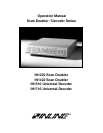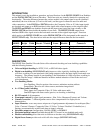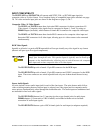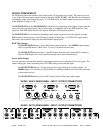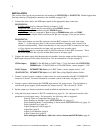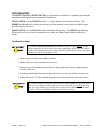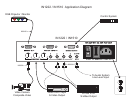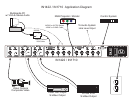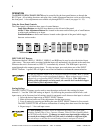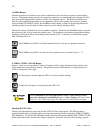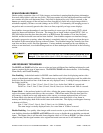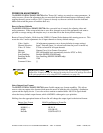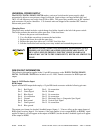
2
IIN1222 / IN1422 / IN1510 / IN1710 OPERATIONS MANUAL - REV. 2 12/04/99 ©1994 - INLINE, INC.
INPUT COMPATIBILITY
The IN1222/1422 and IN1510/1710 will operate with NTSC, PAL, or SECAM input signals in
composite video or S-video format. For a complete listing of compatible input video standards see page
20. All video and audio input jacks are shown in the diagrams on pages 3, 6 & 7.
Composite Video / S-Video Signals
The IN1222 and IN1510 feature three 4-pin mini-DIN connectors for direct connection of S-
Video signals. Composite video signals may be connected to Inputs 1, 2 and 3 by using an
IN9091 adapter (included), which features a female RCA connector for composite video input.
The IN1422 and IN1710 feature three female BNC connectors for composite video input and
three mini-DIN connectors for S-video input, allowing up to six video sources to be connected
simultaneously.
RGB Video Signals
Input #4 on all units is a passive RGB input which will accept virtually any video signal in any format
(the unit will pass up to five signal components).
The IN1222/IN1510 provide a female 15-pin HD connector for the RGB input.
The IN1422/IN1710 provide a female 15-pin HD connector and 5 BNC connectors for the RGB
input. These two connectors are wired in parallel and only one of them should be used at any
time.
Stereo Audio Signals
All units include a stereo audio input jack for each of the four inputs. The units feature audio-follow-
video switching meaning that any time an input is selected, one video signal and its companion audio
stereo pair are simultaneously routed through the doubler/decoder. The audio inputs are unbalanced and
are intended for line level audio signals.
The IN1222/IN1510 feature four 3.5 mm ring-tip-sleeve type female jacks for audio input.
IN9090 adapters (3.5 mm male to 2-RCA female) are included with the unit to facilitate
connection of audio input signals.
The IN1422/IN1710 feature a pair of RCA female jacks for each input (no adapters required).
RGB signals sent into Input 4 are not decoded, doubled, or altered in any way and
simply pass through the unit. This passive input is typically used to hook up a
computer to the doubler/decoder, allowing users to switch between the computer
video input and various composite video or S-video inputs.



